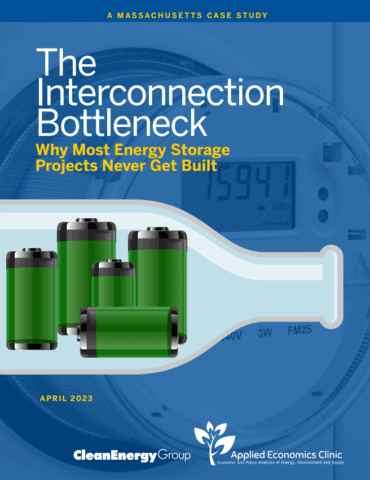The Interconnection Bottleneck: Why Most Energy Storage Projects Never Get Built
May 11, 2023
Applied Economics Clinic | Clean Energy Group
This report investigates the barriers to more effective and efficient interconnection of distributed energy storage resources. The report is informed by research and interviews with key stakeholders in the energy industry and the state energy policy community. Interviewees provided insight into the obstacles to efficient interconnection and discussed potential solutions. The report synthesizes information gathered in these interviews with the current policy and academic literature on interconnection to highlight interconnection barriers, explains their impact on energy storage deployment and market development, and proposes policy solutions.
The report focuses on Massachusetts as a case study, but the lessons learned are broadly applicable. In most states (as in Massachusetts) the local interconnection processes have not kept up with rising interest in and incentives for energy storage resources. Applications for interconnection are increasing while authorizations lag behind; and the interconnection process, along with the “cost causation” method of allocating the costs of needed grid upgrades, results in the majority of proposed energy storage projects being withdrawn from the interconnection queue. This undercuts state policy goals and frustrates incentive programs.
“Nationally, almost all of the projects waiting in interconnection queues are for solar, wind and storage projects,” said Todd Olinsky-Paul of Clean Energy Group. “The wait to interconnect is so long that many projects drop out and never end up being built. Those that don’t drop out due to long wait times can face enormous costs for distribution grid upgrades, which makes projects uneconomic. This poses a barrier to energy storage deployment and hinders the ability of states to meet clean energy and decarbonization goals.”





